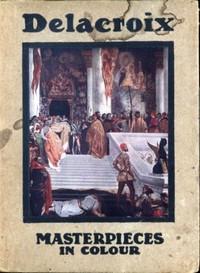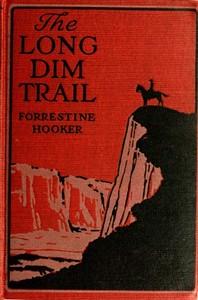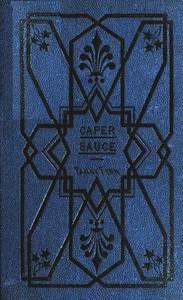|
|
Read this ebook for free! No credit card needed, absolutely nothing to pay.Words: 8939 in 3 pages
This is an ebook sharing website. You can read the uploaded ebooks for free here. No credit cards needed, nothing to pay. If you want to own a digital copy of the ebook, or want to read offline with your favorite ebook-reader, then you can choose to buy and download the ebook.

: Delacroix by Konody Paul G Paul George - Delacroix Eugène 1798-1863 Masterpieces in Colour@FreeBooksWed 07 Jun, 2023 ral decorations it may be as well to sketch in brief outline the course of the remaining years of his life--a life of ceaseless productive energy, interrupted only by spells of illness, but otherwise strangely uneventful. After the references in the preceding pages of the important pictures which constitute, as it were, the landmarks in Delacroix's career, it would be as impossible as it is superfluous to describe, or even to enumerate, the masterpieces produced year by year by his indefatigable brush. A volume of considerable bulk would be needed for a mere list, for, according to Robaut's statement at the beginning of his catalogue: "Eug?ne Delacroix has left about 9140 works, of which number 853 are paintings, 1525 pastels, water-colours, or wash-drawings, 6629 drawings, 24 engravings, 109 lithographs, and over 60 albums!" This is the great picture with which Delacroix, then twenty-four years of age, made his debut at the Salon of 1822. The dramatic power of the central group and the frenzied movement and superb modelling of the nude figures clinging to the boat, caused an immense sensation with a public accustomed to the frigid classicism of the David School. Unfortunately the picture is now badly cracked and discoloured, probably owing to the use of bituminous pigment, which Delacroix only discarded at a later period. Whether it be due to his unshaken perseverance on the path he had chosen from the very outset, or to the waning interest caused by the wearing off of the novelty, Delacroix's art was now more readily accepted, or, at any rate, discussed without the bitterness of the early attacks. Nevertheless, even now, and indeed to the end of his life, he could only obtain wretched prices for his pictures, and the Academy remained implacably hostile, until the special collection of his principal works at the International Exhibition of 1855 brought him at last that general public applause that had till then been denied to him. Delacroix himself showed no bitterness to the Academy, and presented himself time after time for election, his claims being invariably couched in terms as modest as they were dignified. His first attempt was in 1837, when the votes were cast in favour of Schnetz. Two vacancies occurred in 1838, and on both occasions Delacroix knocked at the doors of the Academy, but Langlois and Couder were preferred to him. His next attempt was in 1849, when Cogniet secured the majority of votes. When he presented himself again in 1853, insult was added to injury, his very candidature being refused! Time has avenged the wrong; the names of Schnetz, Langlois, Couder, and Cogniet are all but forgotten, whilst Delacroix has become immortal. Encouraged by his triumph at the Universal Exposition of 1855, Delacroix presented himself for the sixth time when the next vacancy arose in 1857, and this time his perseverance at last found its reward--he was elected just before he entered upon the seventh decade of his life. But even now he was denied peaceful enjoyment of his tardy success. His next contributions to the Salon, in 1859, led to a renewed outburst of vituperative criticism and abuse, and this time Delacroix was hurt to the quick. He decided not to expose himself in future to the gibes of his detractors, and for the remaining four years of his life, although continuing his artistic activity to the very end, refrained from contributing to public exhibitions. The years 1837-1841 mark a fruitful epoch in Delacroix's career. The masterpieces that issued from his studio in these years would alone have sufficed to establish his lasting fame. In 1837 he painted the magnificent "Battle of Taillebourg," which is the glory of the gallery of battle pictures at Versailles, but found so little favour with the jury of the Salon that it narrowly escaped being rejected. The tumult and confusion of hand-to-hand fighting had never before been rendered with such force and such absence of heroic attitudinising. To the next year we owe "The Enraged Medea," of the Lille Museum, and that extraordinary scene of fitful, jerky, furious movement known as "Les Convulsionnaires de Tanger," which, after having twice changed hands at public auction during the artist's lifetime, for ?87 in 1852 and for ?1160 in 1858, rose to ?1940 at a sale held in 1869, and finally found a purchaser for ?3800 in 1881. The "Jewish Wedding in Morocco," in which the painter's concern with true tone-values and beautiful quality of pigment is carried even further than in the "Algerian Women," and the intensely dramatic "Hamlet and the Gravediggers"--both are now at the Louvre--were his chief works in 1839; whilst in the following year he devoted his energies to the large "Justice of Trajan" at the Rouen Gallery, and the powerful "Shipwreck of Don Juan," surely one of the most tragic and impressive pictures ever conceived by human genius. It bears the same relation to the "Dante and Virgil" that "The Crusaders" bears to "The Massacre of Scio." And it is one of the most striking instances of Delacroix's power to make colour itself expressive of the mood of the drama. The conception, though based on Byron's poem, owes little to the literary foundation--that is to say, it is not illustrative in the sense that acquaintance with the poem is essential for its appreciation. It is just a vivid realisation of the combined horrors of shipwreck and starvation in which the tragic aspect of sea and sky is as significant as the ghastliness of the wretches whom hunger has turned into cannibals. The sombre tonality and the flashes of livid light, recall El Greco in his later period. To the year 1841 belongs "The Entry of the Crusaders into Constantinople," of which mention has already been made. At the Salon of 1845 appeared the large painting of "The Sultan of Morocco surrounded by his Guard," which was bought by the State for the Toulouse Gallery at the price of ?160. Baudelaire, ever an ardent admirer of Delacroix, draws attention to the peculiar quality of the colour harmony in this picture which, "notwithstanding the splendour of the tones, is grey, grey like Nature, grey like the atmosphere of a summer day, when the sunlight spreads like a twilight of vibrating dust upon every object." "The Sultan of Morocco" was one of the last large canvases produced by the master, whose best energies were now absorbed by his gigantic decorative tasks, although he continued to paint an endless succession of easel pictures, many of which were variations of earlier compositions. The Library of the Palais Bourbon has been described by a well-known recent German critic as the "French Sistine Chapel." To any one examining this vast work in an unprejudiced spirit it will be difficult to share this enthusiasm. The cool and noble intellectuality which is at the basis of Delacroix's art, even where it is apparently most spontaneous and fugous, certainly renders these decorations supremely interesting. But the appeal is intellectual rather than sensuous. The beholder is filled with profound respect, instead of being thrilled by the emotional effect of colour. Nor can this be entirely due to bad lighting and to the serious deterioration and indifferent restoring of the paintings, of which scarcely more than the design is by Delacroix's own hand, the execution being almost entirely due to Lassalle Bordes and other assistants, who are also largely responsible for the actual painting of the Luxembourg decoration. The work in the Library of the Chamber of Deputies consists of two hemicycles of "Peace" and "War" , and twenty pendentives--four in each of the five cupolas--with connecting ornamental bands and cartouches. In the first cupola, Poetry is illustrated by "Alexander and Homer's Poems," "The Education of Achilles," "Ovid with the Barbarians," and "Hesiod and the Muse." Theology is the subject of the second dome: "Adam and Eve," "The Babylonian Captivity," "The Death of St. John," and "The Tribute Money." Law of the third: "Numa and Egeria," "Lycurgus," "Demosthenes," and "Cicero"; Philosophy of the fourth: "Herodotus," "Chaldean Shepherd Astronomers," "Seneca's Death," and "Socrates"; and Science of the fifth: "The Death of Pliny," "Aristoteles," "Hippocrates," and "Archimedes." Each pendentive depicts, not a single figure, but an admirably composed scene of history or legend. The series was commenced in 1837 and completed in 1847. The two hemicycles are painted in the encaustic manner direct upon the wall, whilst all the rest is executed in oils on canvas. The decoration of the Library in the Luxembourg Palace took from 1845 to 1847. It consists of a fan-shaped hemicycle of over 30 feet in width, the subject of which is Alexander, after the Battle of Arbela, ordering the works of Homer to be enclosed in a golden casket captured from the Persians; and the paintings in the cupola--a composition in four parts but without division , and four pendentives, St. Jerome, Cicero, Orpheus, and the Muse of Aristoteles. Delacroix himself considered this picture, which was painted in 1826, to be his masterpiece. Exhibited first at the Salon of 1827, when "The Death of Sardanapalus" caused a veritable torrent of abuse to be showered upon the artist, it failed to attract the favourable attention which its nobly balanced design, brilliant colour, and intensely dramatic feeling would otherwise surely have commanded, and which was given to it in the following year by the London public. "Marino Faliero" is unquestionably the finest example of Delacroix's art in England. Earlier in date than the Library of the Senate is the large mural painting in wax colours of the "Piet?" in the Church of St. D?nis-du-Saint-Sacrement. It bears the date 1843, and is, apart from the passionate intensity of movement and expression, and its linear rhythm, interesting as an instance of the almost incredible rapidity with which Delacroix proceeded upon the actual execution of his paintings, once the scheme had taken definite shape in his mind. According to Moreau, who had this information from the artist himself, the whole painting of about 15 ft. by 11 ft. was finished in seventeen days, each day's progress being marked by Delacroix on the wall. Free books android app tbrJar TBR JAR Read Free books online gutenberg More posts by @FreeBooks

: The Long Dim Trail by Hooker Forrestine C Forrestine Cooper - Western stories; Arizona Fiction; Cowboys Fiction; Ranch life Fiction@FreeBooksWed 07 Jun, 2023
|
Terms of Use Stock Market News! © gutenberg.org.in2025 All Rights reserved.






